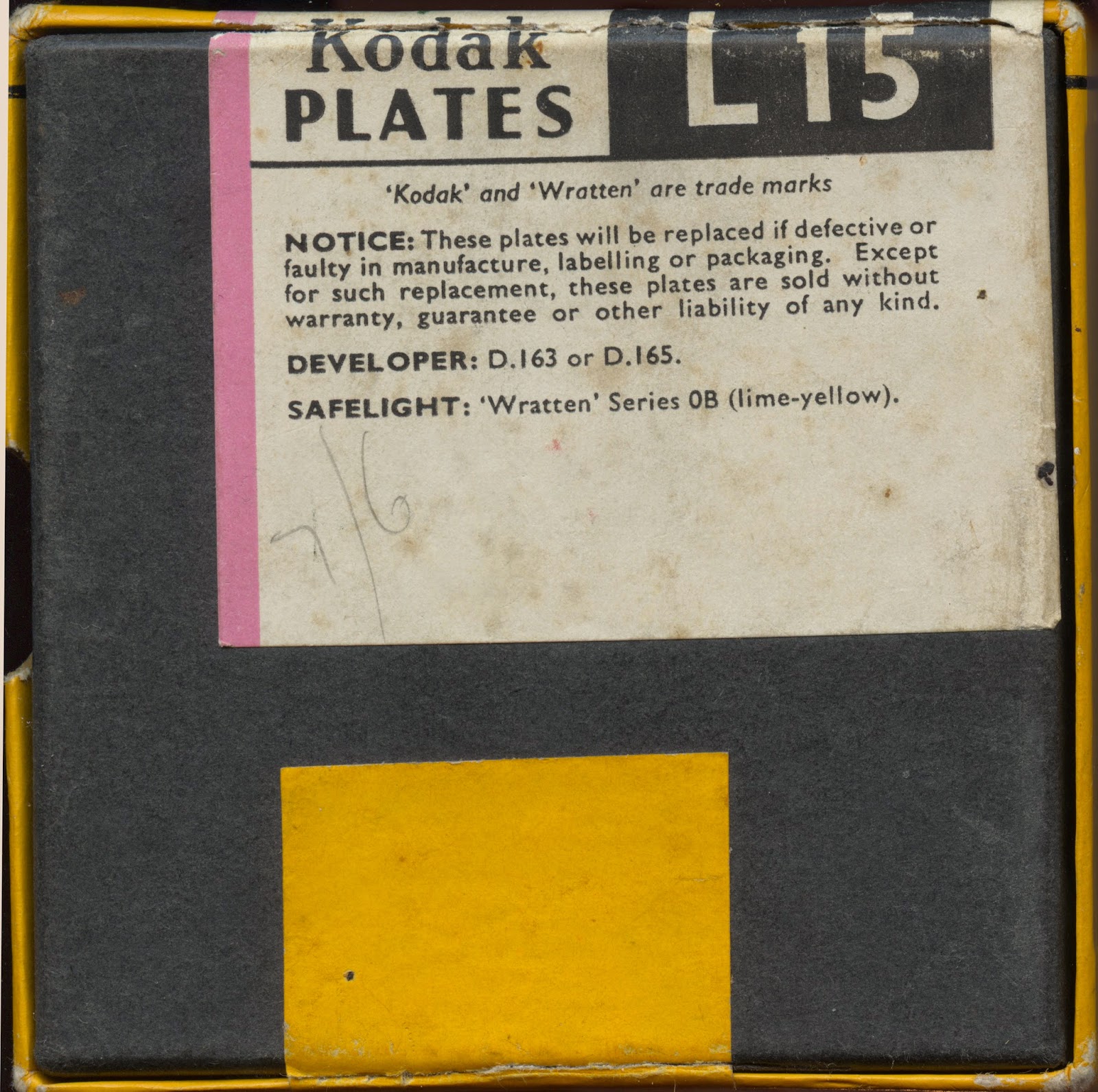The next set of vintage paper is not actual paper but glass plates.
These are Kodak L16 Lantern Plates. They are bromide emulsion and one is to treat them as if they are bromide paper according to the instructions. They are 3 1/4"x 3 1/4" square and as the name implies they are meant for a Magic Lantern for Projection. The brochure also suggests spectrographic work in the blue to ultraviolet parts of the spectrum.
 |
| Bottom |
 |
| Packaging |
 |
| Label |
The brochure is reproduced here...
 |
| L16 Brochure Front (click to enlarge) |
 |
| L16 Brochure Back (click to enlarge) |
In the past I have noticed that my usual paper developer Ilford Universal PQ does not deal with fogging on some old emulsions whereas EasyLith from Wolfgang Moersch performs much better. The trouble with Lith is that the exposure takes longer as well as the developer and the vigilance to snatch the print at the right time. So I printed my first plate using EasyLith with the enlarger set at f8 I judged a 2 minute exposure would give me the overexposure required. Not sure the plate would have any anti-halation layer I placed a piece of black paper between the plate and my printing frame which is white. This should prevent any stray reflections from harming the print. (I have not seen any sign of an anti-halation layer. There is no backing to remove and there is no discoloration of the developer either. Though I have attempted to print on the emulsion side of the plate I failed in all four cases. In the dark what I took to be the rougher/textured surface I placed face up only to find the emulsion on the bottom; perhaps I am feeling some anti-halation layer which I am taking to be the emulsion and it subsequently dissolves during development.) I then started developing and snatched it out at about the 8 minute mark. I got a very good result. Judging the snatch point is difficult as the emulsion is milky and so the contrast is harder to judge. The milkiness goes away in the fix.
 |
| f8 EasyLith 2 min exposure 8 min developer |
Disliking the disadvantages of the Lith I decided to try Universal PQ. I ran a test plate and predictably got significant fogging. Because I printed in a printing frame the areas of the border should be clear. In the lith they are mostly with some stray marks.
 |
| f8 PQ Universal 4/8/16/32/64 Seconds |
Note the border areas are not as clear.
Next I thought I would try some ECO4812 developer from Moersch as well. I have never tried it but thought perhaps it might deal with fogging better. I mixed a batch and tried it next.
 |
| ECO4812 1+14 f8 4/8/16/32/64 seconds. 3 minutes develop |
It didn't fair any better on the border fogging. The developer appears to be more active as it was a much darker print despite the same exposure.
Finally I tried the Lith as a test strip. This is shown below for reference.
 |
| Easy Lith Test 4/8/16/32/64 seconds. 12 min develop |
The white patches are tears in the emulsions that were made while it was still wet. Emulsion does not adhere well to glass and so must be handled carefully. Note the clear borders again.









Comments